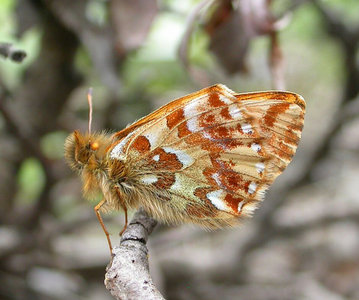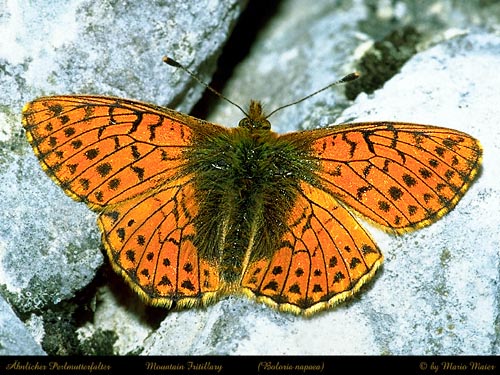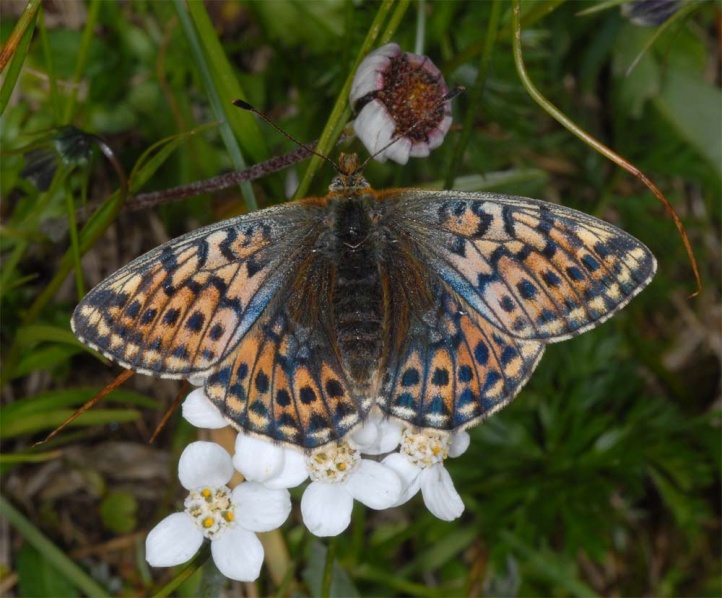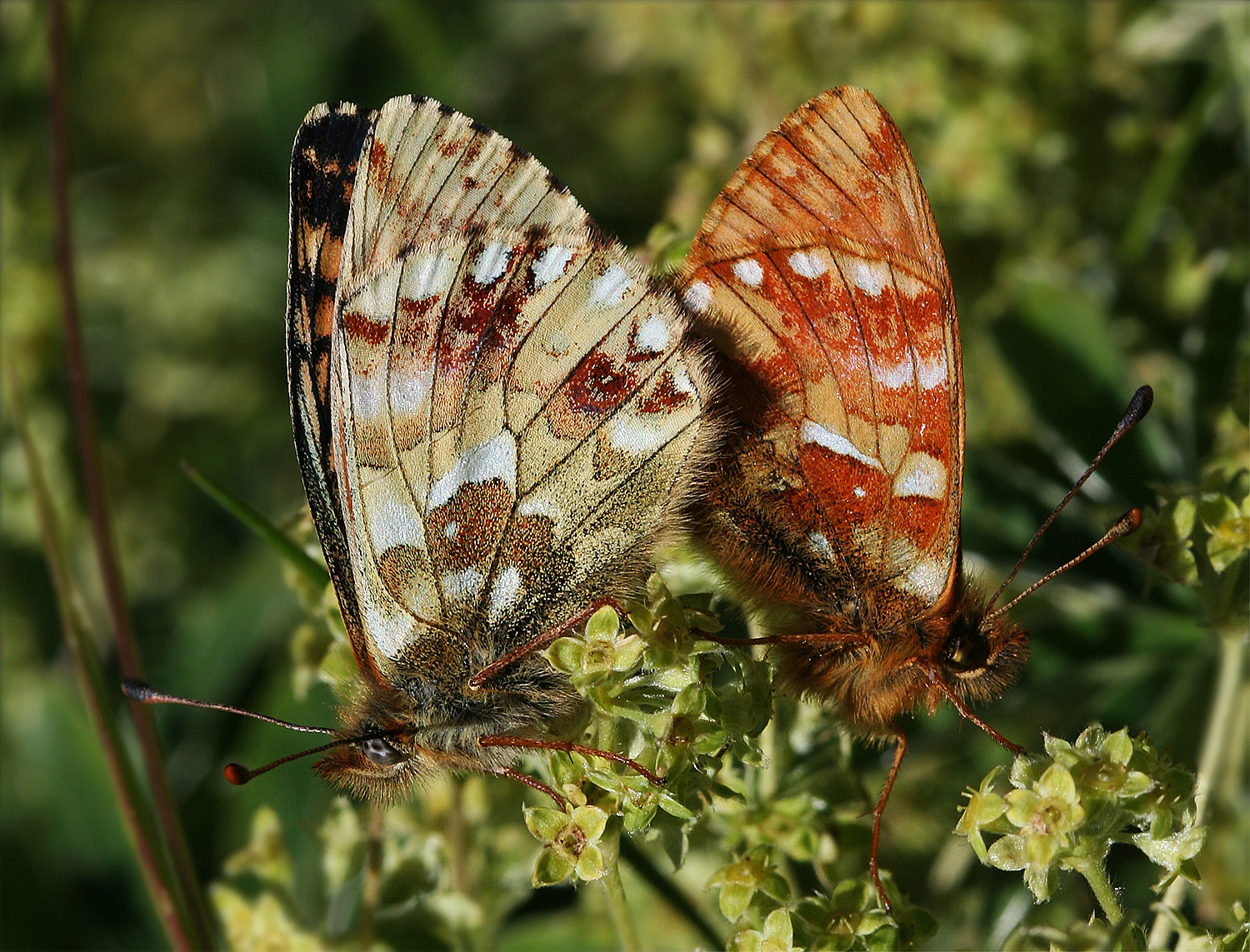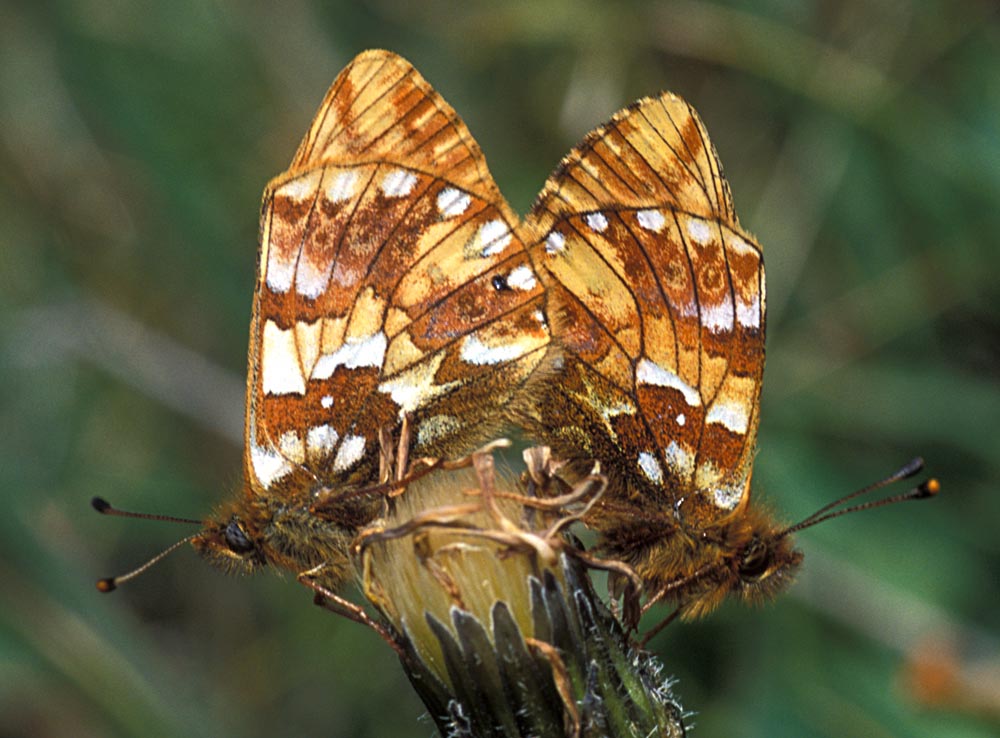Boloria napaea
Similar Fritillary ( Boloria napaea )
The Similar Fritillary ( Boloria napaea ) is a butterfly ( butterfly ) of the family Nymphalidae ( Nymphalidae ).
- 5.1 Notes and references
- 5.2 Literature
Features
Butterfly
The upper wing of the butterfly, which have a wingspan of about 28 to 34 millimeters, is traversed in the males bright orange - brown, and of a fine black powder, consisting of points and lines drawing. The females, however, are usually purple-brown or green-brown colored. Are distinguished by their yellow -green colored rear wing underside, which has only some red and white drawing elements.
Egg, caterpillar, pupa
The egg has a cone- like shape, is strongly ribbed and shimmering brown. The caterpillars are colored black brown, have a yellowish, brown dashed back line as well as short, gray bristles. The doll has a dark brown color with a stained drawing. It has a compact shape and is almost twice as wide as that of pales.
Similar Species
The Fritillary Similar resembles some other Perlmutterfalterarten, in particular the following:
- Alpine meadows Fritillary ( Boloria pales ). These moths are somewhat smaller. The females do not show at napaea predominant violet-brown or green-brown upper surface staining, just as their more yellow green colored rear wing underside, but have a rust-red color.
- Boloria graeca is a roughly equal way even more tending their hind wing underside in yellowish stains.
- Raised bog fritillary ( Boloria aquilonaris ). The moths are breitflügeliger with more rounded hind wings. The black drawing is something distinctive and powerful.
- Snake root Fritillary ( Boloria titania ). The drawing on the front is striking and somewhat darker, the underside of the hind wings strongly colored rust.
- Alpine Fritillary ( Boloria Thore ). The species has much darker, partly merging into each other drawing elements on the wing fronts.
- Magerrasen Fritillary ( Boloria dia). The moths are drawn usually much smaller and more powerful.
- Meadowsweet Fritillary ( Brenthis ino ). The moths are larger, have strikingly rounded wings and a pale, slightly pronounced Rotzeichnung on the hind wings back.
In order for the determination still be safe, specialists should be consulted.
Distribution and habitat
The incidence of type includes higher altitudes in the Pyrenees, Alps, Fennoscandia, southern Siberia, the Altai and the Amur region as well as in Alaska and Wyoming. It is usually found at altitudes 1200-2800 meters on mountain meadows, is in northern Norway but occasionally up to the shoreline. In Austria in the Alps, many localities but extinguished.
Way of life
The moths live in a generation from late June to August. You like to fly over flower-filled alpine meadows. The caterpillars feed on the leaves of low plants, such as violets ( Viola ) and Knötericharten ( Persicaria, Polygonum ). They overwinter small. At higher altitudes or northern latitudes of the development cycle can take two growing seasons.
Endangering
The species occurs only in Germany in the Bavarian Alps and is run on the Red List of endangered species in category R ( kind of geographical restriction ).


